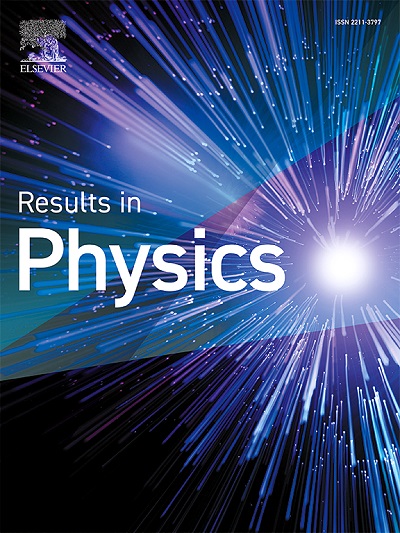Sn:SiO2复合层的NEXAFS光谱特性
IF 4.6
2区 物理与天体物理
Q2 MATERIALS SCIENCE, MULTIDISCIPLINARY
引用次数: 0
摘要
利用同步加速器近边x射线吸收精细结构(NEXAFS)光谱研究了在单晶硅片上经氩离子处理的金属化学气相沉积技术(CVD)生长的新型Sn:SiO2复合薄层。根据先前报道的热力学异常,在金属氧化物薄层的生长过程中,硅和二氧化锡表面之间发生了有效的氧交换。本研究的重点是二氧化硅基体中锡纳米结构的原子和电子结构的可视化。结果表明,初始复合层在氩离子处理过程中没有发生明显的化学变化。大气残留物的去除部分钝化了高度缺陷的SnO2-x顶层的缺陷,但没有显著改变初始NEXAFS Sn M4,5边缘光谱。基于这些结果,我们发现锡纳米粒子在无定形二氧化硅基体中的主要定位状态是金属态。此外,基于NEXAFS Si L2,3-edge研究,我们发现二氧化硅与存在亚氧化硅的热沉积SiO2层的化学计量结构最相关。这些结果提供了对Sn:SiO2复合材料的原子和电子结构的见解,并有助于在与热能储存和新型光子器件相关的各种应用概念中实现这种材料。本文章由计算机程序翻译,如有差异,请以英文原文为准。
NEXAFS spectral peculiarities in Sn:SiO2 composite layer
Synchrotron-based near-edge X-ray absorption fine structure (NEXAFS) spectroscopy has been used to investigate a novel Sn:SiO2 composite thin layer grown by organometallic chemical vapor deposition technique (CVD) on a single crystalline silicon wafer with additional treatment by argon ions. According to a previously reported thermodynamic anomaly, an efficient exchange of oxygen between the silicon and tin dioxide surfaces occurs during the growth of the metal oxide thin layer. The present study focuses on the visualization of the atomic and electronic structure of tin nanostructures localized in silica matrix. It is found that no significant chemical alterations are observed during argon ions treatment of the initial composite layer. The removal of atmospheric residues, which partially passivated defects in the highly defective SnO2-x top layer, did not significantly change the initial NEXAFS Sn M4,5 edge spectrum. Based on these results, we found that the main state in which tin nanoparticles localized in the amorphous silica matrix is the metallic state. In addition, based on the NEXAFS Si L2,3-edge studies, we found that silica is most associated with the stoichiometric structure of thermally deposited SiO2 layer with the presence of silicon suboxides. These results provide insights into the atomic and electronic structure of Sn:SiO2 composites and contribute to the possible implementation of such materials in various application concepts related to thermal energy storage and novel photonic devices.
求助全文
通过发布文献求助,成功后即可免费获取论文全文。
去求助
来源期刊

Results in Physics
MATERIALS SCIENCE, MULTIDISCIPLINARYPHYSIC-PHYSICS, MULTIDISCIPLINARY
CiteScore
8.70
自引率
9.40%
发文量
754
审稿时长
50 days
期刊介绍:
Results in Physics is an open access journal offering authors the opportunity to publish in all fundamental and interdisciplinary areas of physics, materials science, and applied physics. Papers of a theoretical, computational, and experimental nature are all welcome. Results in Physics accepts papers that are scientifically sound, technically correct and provide valuable new knowledge to the physics community. Topics such as three-dimensional flow and magnetohydrodynamics are not within the scope of Results in Physics.
Results in Physics welcomes three types of papers:
1. Full research papers
2. Microarticles: very short papers, no longer than two pages. They may consist of a single, but well-described piece of information, such as:
- Data and/or a plot plus a description
- Description of a new method or instrumentation
- Negative results
- Concept or design study
3. Letters to the Editor: Letters discussing a recent article published in Results in Physics are welcome. These are objective, constructive, or educational critiques of papers published in Results in Physics. Accepted letters will be sent to the author of the original paper for a response. Each letter and response is published together. Letters should be received within 8 weeks of the article''s publication. They should not exceed 750 words of text and 10 references.
 求助内容:
求助内容: 应助结果提醒方式:
应助结果提醒方式:


